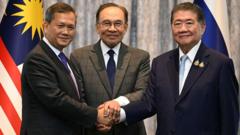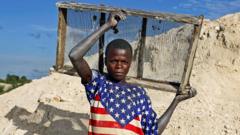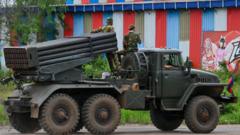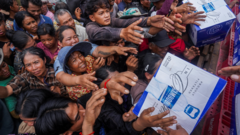During a weeklong visit to Vietnam, Malaysia, and Cambodia, President Xi Jinping promotes cooperation and stability in trade amidst escalating U.S. tariffs, while navigating regional uncertainties and relations with the Trump administration.
Xi Jinping's Southeast Asia Tour: A Bid for Trade Alliances Amidst U.S. Tariff Tensions

Xi Jinping's Southeast Asia Tour: A Bid for Trade Alliances Amidst U.S. Tariff Tensions
China's President seeks to strengthen economic ties in the region as he counters U.S. tariffs impacting local economies.
China's leader, Xi Jinping, embarked on a significant weeklong tour through Southeast Asia on Monday, commencing in Hanoi and continuing to Malaysia and Cambodia. The visit aims to forge stronger economic alliances as the ramifications of escalating U.S. tariffs loom large over the region’s manufacturing sectors and economic stability.
In a preparatory essay published in Vietnamese state outlets prior to his arrival, Xi emphasized the importance of collective resistance against protectionism, advocating for free trade and a cooperative international framework. "There are no winners in trade wars and tariff wars," Xi argued, reiterating calls for unity among nations facing similar challenges posed by the U.S. trade policies.
The optics of Xi's tour are expertly crafted, with vibrant displays of local culture, such as traditional Vietnamese dresses and flags, greeting him as he lands in Hanoi. However, behind the scenes, regional leaders face a complex balancing act, as they attempt to manage their relationships with the Trump administration while also considering the deepening ties with China.
As the U.S.-China trade war intensifies, involving substantial tariff retaliations and restrictions on critical resources, Vietnam and its Southeast Asian neighbors remain cautious. They are aware of the economic vulnerabilities that could arise from aligning too closely with Beijing, particularly in light of their dependence on the U.S. market. The unfolding week promises to reveal more about both the public displays of camaraderie and the private negotiations that will shape the future of trade in Asia.



















